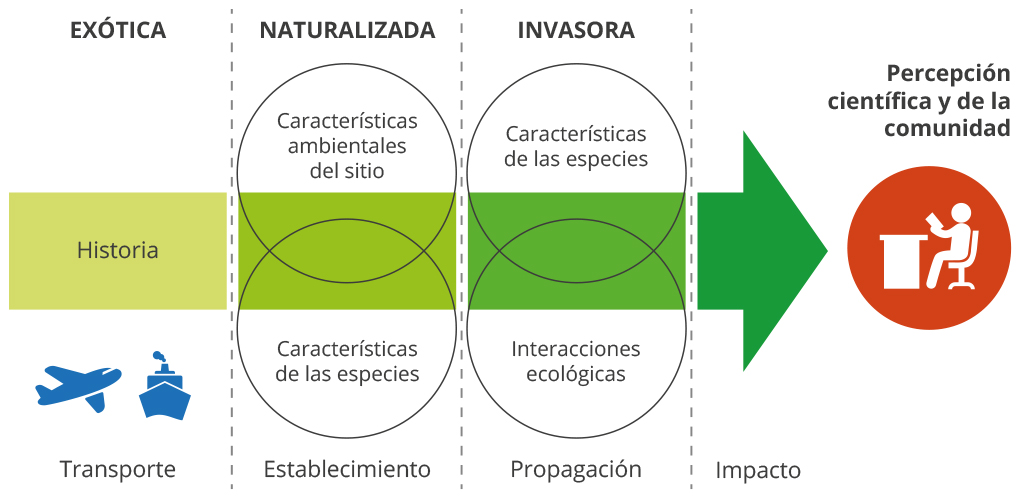Biological Invasions
What are the biological invasions?
Biological invasions occurs when external organisms (plants, animals, bacteria, etc.) are transported by human activity- intentional or accidentally- to new, often distant areas. A percentage of these species manages to establish and reproduce successfully (its offspring survive without human interaction), to later disperse, colonizing new areas and expanding its geographic range. This process gives the species the character of an invader.


Exotic or introduced species
Species whose presence in a biogeographic region is due to intentional or accidental introduction as a consequence of human activity.

Naturalized species
Exotic species that reproduces constantly and maintain stable populations, without the direct intervention of human beings.

Invasive species
Naturalized species that reproduces in large numbers and have the potential to spread over a considerable area, occupying natural habitats.
The growth of new populations of the invasive species can cause impact on the ecosystems, native species or in human activities. The understanding of the dynamics between native ecosystems and introduced species will allow a better management, avoiding that new species can turn invasive, and in some cases, mitigating the impacts that invasive species already established could cause.
Impacts
produced by biological invasions
